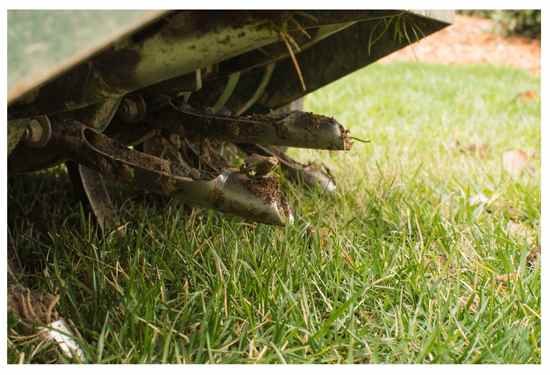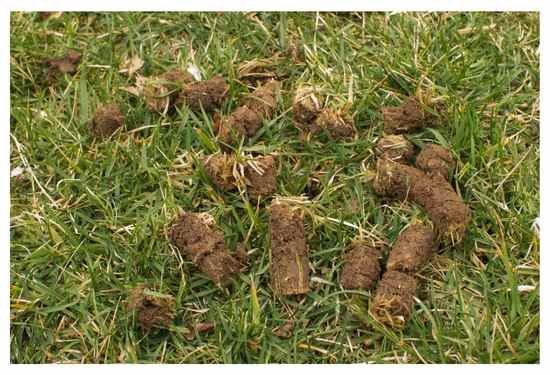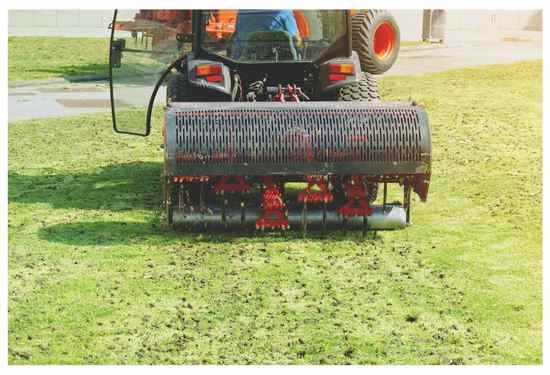We're an affiliate
We hope you love the products we recommend! Just so you know, we may collect a share of sales or other compensation from the links on this page. Thank you if you use our links, we really appreciate it!
Lawn aeration is a process that helps to improve the quality of your lawn by increasing the amount of air and water that gets down to the roots. This is done by creating small holes in the soil, which allows air, water, and fertilizer to get down to the roots.
Professionals typically recommend aerating your lawn once a year. The best time to aerate the lawn is in the fall, when the temperatures dropped below 85 degrees.
In order for this to happen, you need to have the right equipment and understand what needs to be done. We will go over everything in this article so that you can make an informed decision about whether you should aerate your lawn.
What Is Lawn Aeration?
Lawn aeration is a process where you punch small holes into the lawn to allow air, water and nutrients to penetrate the grass roots. This helps the roots grow deeper and stronger, leading to a healthier lawn. Lawn aeration can be done with a manual or motorized aerator.

There are many benefits to lawn aeration, including:
- Improved root growth
- Enhanced nutrient uptake
- Increased water absorption
- Reduced thatch buildup
- Stimulated new growth
How Do I Know If My Lawn Needs Aeration?
There are a few telltale signs that your lawn may need aeration. If you notice any of the following, it’s time to break out the aerator:
- Your lawn is compacted. This is especially common in high-traffic areas, or places where your family and pets spend a lot of time.
- There are bare patches in your grass, with little or no growth.
- Your grass is thinning out, and you can see more soil than usual.
- You notice that water isn’t draining properly after rain or irrigation. If puddles form on your lawn, that’s a sign that the soil is too compacted to allow proper drainage.
If you’re not sure whether your lawn needs aeration, you can always ask a professional for advice. But if you do decide to go ahead with aeration, there are a few things you should keep in mind.
First, make sure you choose the right time of year. Aerating in the fall will give your lawn the best chance to recover and thrive. You can still aerate in the spring if you weren’t able to get it done in the fall. But, avoid aerating in the summer, when the heat can stress your grass and make it more susceptible to disease.
Second, be sure to use the correct equipment. A hand aerator will do the job if your lawn is small, but for larger lawns you’ll need a power aerator. This is the perfect time to reseed the lawn. And finally, don’t forget to fertilize after aerating! This will help your grass recover from the stresses of aeration and promote new growth.
What Happens If You Don’t Aerate Your Lawn?
If you don’t aerate your lawn, the grass roots will eventually become compacted. This happens because the soil is constantly being pushed down by foot traffic, mower blades, and other factors. The compacted soil doesn’t have enough room for the roots to grow, which means the grass won’t be able to take in enough nutrients. The grass will become thin and weak, and it will be more susceptible to disease.

Aerating your lawn helps to ease compaction by creating small holes in the soil. This allows air, water, and nutrients to reach the roots more easily. The grass will be healthier and better able to withstand wear and tear. If you have a lot of foot traffic on your lawn, or if it’s located in a dry or hot climate, aerating is especially important.
How Often Should You Aerate The Lawn?
It is recommended that you aerate your lawn at least once a year. This will help to ensure that your lawn remains healthy and vibrant. Aeration also allows for better drainage and helps to reduce compaction.
Some people will aerate twice a year, once in the early spring and once in the early fall
Some people will aerate every other year.
Aeration is an important part of lawn care and you should not overlook it. By taking the time to aerate your lawn regularly, you will be rewarded with a healthier, more beautiful lawn.
What Are The Different Ways To Aerate Lawns?
Aeration is the process of making small holes in your lawn to allow air, water and nutrients to reach the roots of your grass. Aeration can be done with a hand tool or a machine.
There are two main types of aeration: solid tine aeration and core aeration. Solid tine aeration involves using a tool with spikes that penetrates the ground and leaves small holes. Core aeration is similar, but it removes cores of soil usually about ½ inch in diameter and about 2 inches long.
Core aeration is best for the soil. Since it pulls soil out of the lawn, it allows the soil to relax. The reduces the compaction of the soil. Spike aeration doesn’t do as much for the lawn because it doesn’t help reduce compaction.
What To Do After Aeration
After aeration, it is important to seed and fertilize your lawn. This will help the new grass seeds take root and grow. You should also water your lawn regularly to keep the soil moist. Avoid walking on your lawn for at least a week after aeration so that the new grass seeds have time to take root.
Conclusion
Aeration is an important part of keeping your lawn healthy. It allows air, water and nutrients to reach the roots of your grass, promoting growth. It also helps to reduce compaction and thatch buildup. Knowing when to aerate your lawn is vital for maintaining a healthy lawn. Be sure to check out our blog for more tips on lawn care!

